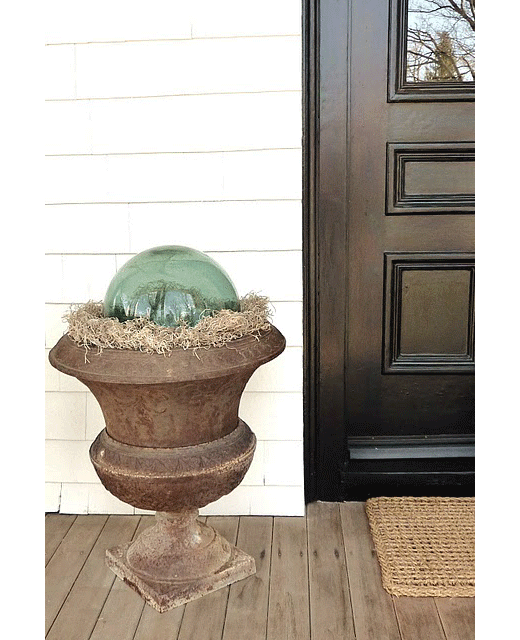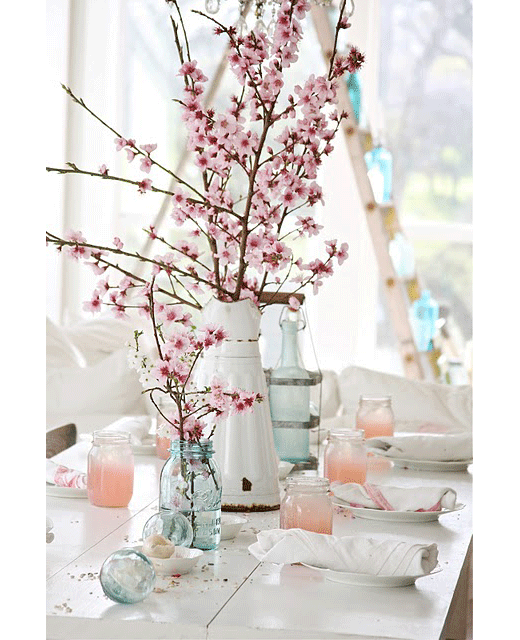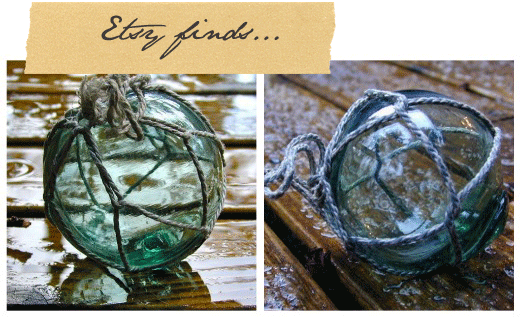Glass Floats: Treasures of the Sea
April 26, 2011
I have noticed glass fishing floats being used in decor for some time now but I’ve never given them much thought. I’ve always thought they were lovely, their shape and colour add an effortless layer of interest into displays. I came across Joan’s blog, For the Love of a House, where she shared her obsessive love for these shiny orbs of glass and how she displays them throughout her home. And I have to say that I was fascinated and now I want some too…

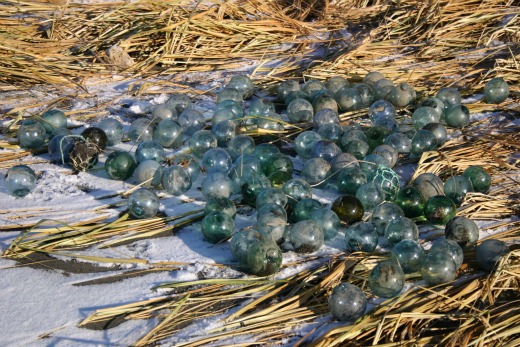 1. Northwest Magazine 2. Glass Float Junkie
1. Northwest Magazine 2. Glass Float Junkie
Wikipedia: “Glass floats, glass fishing floats, or Japanese glass fishing floats are popular collectors? items. They were once used by fishermen in many parts of the world to keep their nets afloat. Large groups of fishnets strung together, sometimes 50 miles (80 km) long, were set adrift in the ocean and supported near the surface by hollow glass balls or cylinders containing air to give them buoyancy. These glass floats are no longer being used by fishermen, but many of them are still afloat in the world’s oceans, primarily the Pacific. They have become a popular collectors? item for beachcombers and decorators. Replicas are also being manufactured. “
 1. Pottery Barn 2. For the Love of a House
1. Pottery Barn 2. For the Love of a House
“Today most of the glass floats remaining in the ocean are stuck in a circular pattern of ocean currents in the North Pacific. Off the east coast of Taiwan, the Kuroshio Current starts as a northern branch of the western-flowing North Equatorial Current. It flows past Japan and meets the arctic waters of the Oyashio Current. At this junction, the North Pacific Current (or Drift) is formed which travels east across Pacific before slowing down in the Gulf of Alaska. As it turns south, the California Current pushes the water into the North Equatorial Current once again, and the cycle continues. Although the number of glass floats is decreasing steadily, many floats are still drifting on these ocean currents. Occasionally storms or certain tidal conditions will break some floats from this circular pattern and bring them ashore. They most often end up on the beaches of Alaska, Washington or Oregon in the United States, Taiwan or Canada. It is estimated that floats must be a minimum of 7?10 years old before washing up on beaches in Alaska. Most floats that wash up, however, would have been afloat for 10 years. A small number of floats are also trapped in the Arctic ice pack where there is movement over the North Pole and into the Atlantic Ocean.“
“Once a float lands on a beach, it may roll in the surf and become “etched” by sand. Many glass floats show distinctive wear patters from the corrosive forces of sand, sun, and salt water. When old netting breaks off of a float, its pattern often remains on the surface of the glass where the glass was protected under the netting. Other floats have small amounts of water trapped inside of them. This water apparently enters the floats through microscopic imperfections in the glass while the floats are suspended in Arctic ice or held under water by netting. To accommodate different fishing styles and nets, the Japanese experimented with many different sizes and shapes of floats, ranging from 2 to 20 inches (510 mm) in diameter. Most were rough spheres, but some were cylindrical or ?rolling pin? shaped. Most floats are shades of green because that is the color of glass from recycled sake bottles (especially after long exposure to sunlight). However, clear, amber, aquamarine, amethyst, blue and other colors were also produced. The most prized and rare color is a red or cranberry hue. These were expensive to make because gold was used to produce the color. Other brilliant tones such as emerald green, cobalt blue, purple, yellow and orange were primarily made in the 1920s and 30s. The majority of the colored floats available for sale today are replicas.“
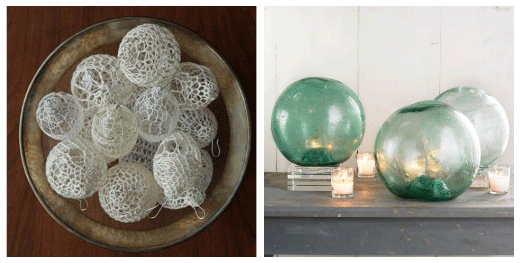 1. Design*Sponge 2. Wisteria
1. Design*Sponge 2. Wisteria
Interesting. Right? In August, we’re heading out to the Oregon coast with Lily’s family as well as 2 other families for a week of relaxing by the ocean. By the sounds of it, August isn’t prime glass float season but I can tell you for sure that I’ll be on the look out for my own glass float. Kamichia, the Glass Float Junkie, is the lucky gal who came across the treasure trove of glass floats that you saw at the beginning of the post. Well, I shouldn’t make it sound so easy. She has been beach combing for glass floats for some time now and she found that glorious stash in Alaska on a super secret beach that she accessed by plane. On occasion, she has found so many that she has had to leave them behind. Can you imagine? Her blog is extremely informative if you would like to know more or to see more photos documenting her hunts and her incredible float collection.
Of course, you don’t need to comb your local beach for days on end digging through the sand in hopes of finding your very own glass fishing float. There are always our friends at Etsy who have done the work for us. Here are a couple of my favourite Etsy floats from Light in a Worm Hole. She has plenty more to choose from in any price, colour, size and shape.
So, does anyone suddenly have the urge to go beach combing? Glass Float season ends soon!


